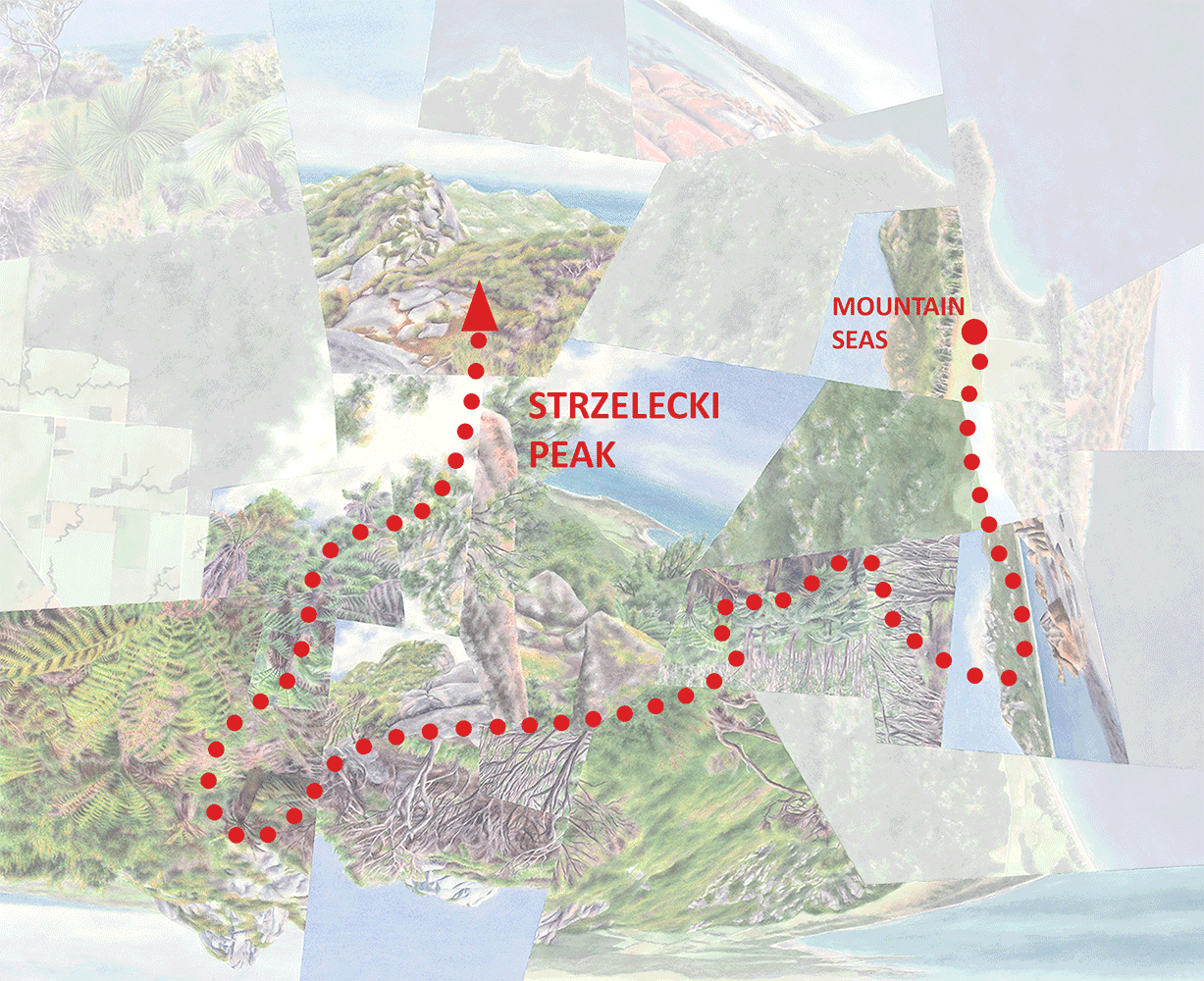At the risk of frailejone overload (can there be such a thing?), I’m devoting another post to my experience in Ecuador’s El Angel Ecological Reserve. The previous post dealt with one of the two zones of the Reserve that I visited; this one will deal with the second, Voladero Lagoon.
Frailejones overlooking the lagoon.
The lagoon, surrounded by frailejone-studded slopes, is accessed by an hour-long loop hike from the road. Here the plants are taller and more numerous than in the area around Polylepis Lodge, giving the place a particularly otherworldly atmosphere.
In the resulting watercolor Lagoon, I depict this piece of páramo as a true wilderness relict although (as with Polylepis Lodge) it’s situated close to one edge of the Reserve with “civilization” visible only on two sides. For some reason, when I was there I pictured the hills enclosing the lagoon to be surrounded on all sides by cultivation. This could’ve been because that ring of hills prevented distant views beyond the far side of the basin and I could imagine fields on the other side.
Páramo meets civilization.
Lagoon, watercolor on paper, 36”x36.”
Another factor giving a more “tamed” feel to the landscape, at least on the day that I happened to visit, was the less gloomy weather compared to the first zone. That the sun was often out, and nothing was hidden in clouds, made the landscape seem less foreboding and more accessible. (On paper I take some liberties with this, adding mist in some areas for variety, but still keep most of the views sunny.) Paradoxically though this meteorological softening of the wild-cultivated boundary also sharpens it. The strikingly surreal vegetation, juxtaposed with agricultural fields, seems all the more surprising when not overlaid with the meteorological conditions that maintain its harsh boggy habitat.
In other ways too, the fact that aside from the frailejones the overall look of the páramo isn’t dramatically different from the surrounding environment lessens the contrast while also intensifying it. The topography of the Reserve is more rugged than that outside it, but not compared to the rock formations of Hidden Valley. And, away from the tiny areas of remaining polylepis forest and patches of introduced trees between the fields, the contrasting landscapes are both non-forested. So the páramo felt relatively approachable and “knowable” in a way that at the same time made it seem even more wild, surreal and remote. In turn this gave me a greater sense of empowerment, in the way that taming a lion would feel more gratifying than taming a squirrel. (I don’t love this “taming” analogy but it pretty well describes “Motivation #2” for the worldviews—making wild places more comprehensible by isolating and compressing them.)
Darren
Frailejone (in the sunflower family) in flower.





















